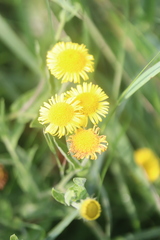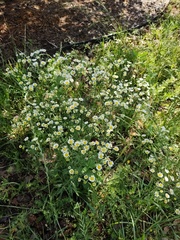©Michel Langeveld, some rights reserved (CC-BY-SA)
©Sally Wagner, some rights reserved (CC-BY-NC)
©Adán, some rights reserved (CC-BY-NC)
©Adán, some rights reserved (CC-BY-NC)
©Andrée Weigel, some rights reserved (CC-BY-NC-ND)
©rudyclaeys, some rights reserved (CC-BY-NC)
©masdupin, some rights reserved (CC-BY-NC)
©Marcel Hospers, some rights reserved (CC-BY-NC)
©biffboo, some rights reserved (CC-BY-NC)
©Oleg Kosterin, some rights reserved (CC-BY)
©Oleg Kosterin, some rights reserved (CC-BY)
©Oleg Kosterin, some rights reserved (CC-BY)
©Yael Orgad, some rights reserved (CC-BY-NC)
©elenakuraeva, some rights reserved (CC-BY-NC)
©Chevalier Bernadette, some rights reserved (CC-BY-NC)
©Chevalier Bernadette, some rights reserved (CC-BY-NC)
©Marc-André Dinéty, some rights reserved (CC-BY-NC)
©Quentin Scouflaire, some rights reserved (CC-BY-NC)
©Quentin Scouflaire, some rights reserved (CC-BY-NC)
©Quentin Scouflaire, some rights reserved (CC-BY-NC)
©Platon Kleanthidis, some rights reserved (CC-BY-NC)
©R. Ziebarth, some rights reserved (CC-BY-NC)
©R. Ziebarth, some rights reserved (CC-BY-NC)
©R. Ziebarth, some rights reserved (CC-BY-NC)
©R. Ziebarth, some rights reserved (CC-BY-NC)
©Almantas Kulbis, some rights reserved (CC-BY-NC)
©Almantas Kulbis, some rights reserved (CC-BY-NC)
©Almantas Kulbis, some rights reserved (CC-BY-NC)
©Karine Nubarian, some rights reserved (CC-BY-NC)
©Karine Nubarian, some rights reserved (CC-BY-NC)
©Alina Burmistrova, some rights reserved (CC-BY-NC)
©Alina Burmistrova, some rights reserved (CC-BY-NC)
©Alina Burmistrova, some rights reserved (CC-BY-NC)
©Alina Burmistrova, some rights reserved (CC-BY-NC)
©wernerwitte, some rights reserved (CC-BY-NC)
©Annette Geiser-Barkhausen, some rights reserved (CC-BY-NC)
©Murielle Desrois, some rights reserved (CC0)
©Almantas Kulbis, some rights reserved (CC-BY-NC)
©Almantas Kulbis, some rights reserved (CC-BY-NC)
©herdjan, some rights reserved (CC-BY-NC)
©Sally Wagner, some rights reserved (CC-BY-NC)
©Sally Wagner, some rights reserved (CC-BY-NC)
©Gaël, some rights reserved (CC-BY-NC)
©Mike Hedde, some rights reserved (CC-BY-NC)
©Mike Hedde, some rights reserved (CC-BY-NC)
©Luca Boscain, some rights reserved (CC-BY-NC)
©wasdadan, some rights reserved (CC-BY-NC)
©wasdadan, some rights reserved (CC-BY-NC)
©eduardmarques, some rights reserved (CC-BY-NC)
©DAUPHIN Jean-Paul, some rights reserved (CC-BY-NC)
©DAUPHIN Jean-Paul, some rights reserved (CC-BY-NC)
©Michel Langeveld, some rights reserved (CC-BY-SA)
©Michel Langeveld, some rights reserved (CC-BY-SA)
©Amber, some rights reserved (CC-BY-NC)
©Amber, some rights reserved (CC-BY-NC)
©Amber, some rights reserved (CC-BY-NC)
©Amber, some rights reserved (CC-BY-NC)
©Ben Costamagna, some rights reserved (CC-BY-NC)
©Ben Costamagna, some rights reserved (CC-BY-NC)
©Ben Costamagna, some rights reserved (CC-BY-NC)
©ms-beth, some rights reserved (CC-BY-NC)
©wolff christiane, some rights reserved (CC-BY-NC)
©wolff christiane, some rights reserved (CC-BY-NC)
©wolff christiane, some rights reserved (CC-BY-NC)
©wolff christiane, some rights reserved (CC-BY-NC)
©wolff christiane, some rights reserved (CC-BY-NC)
©wolff christiane, some rights reserved (CC-BY-NC)
©wolff christiane, some rights reserved (CC-BY-NC)
©wolff christiane, some rights reserved (CC-BY-NC)
©wolff christiane, some rights reserved (CC-BY-NC)
©wolff christiane, some rights reserved (CC-BY-NC)
©eduardmarques, some rights reserved (CC-BY-NC)
©enginbacak, some rights reserved (CC-BY-NC)
©Luka Marić, some rights reserved (CC-BY-NC)
©andarubel, some rights reserved (CC-BY-NC)
©andarubel, some rights reserved (CC-BY-NC)
©andarubel, some rights reserved (CC-BY-NC)
©Annette Geiser-Barkhausen, some rights reserved (CC-BY-NC)
©Miguel A. Casado, some rights reserved (CC-BY-NC)
©melamers, some rights reserved (CC-BY-NC)
©Roland Godon, some rights reserved (CC-BY)
©Giulia, some rights reserved (CC-BY-NC)
©Jean-Marie Frenoux, some rights reserved (CC-BY-NC)
©Jean-Marie Frenoux, some rights reserved (CC-BY-NC)
©Jean-Marie Frenoux, some rights reserved (CC-BY-NC)
©Birger, some rights reserved (CC-BY-NC)
©Laurent Barthe, some rights reserved (CC-BY-NC)
©Laurent Barthe, some rights reserved (CC-BY-NC)
©merce_galbany_casals, some rights reserved (CC-BY-NC)
©merce_galbany_casals, some rights reserved (CC-BY-NC)
©adrienivrt, some rights reserved (CC-BY-NC)
©semrak, some rights reserved (CC-BY-NC)
©enginbacak, some rights reserved (CC-BY-NC)
©Andrée Weigel, some rights reserved (CC-BY-NC-ND)
©Josep Gesti, some rights reserved (CC-BY-SA)
©Sebastian Ćato, some rights reserved (CC-BY-NC)
©Sebastian Ćato, some rights reserved (CC-BY-NC)
©Sebastian Ćato, some rights reserved (CC-BY-NC)
©Sebastian Ćato, some rights reserved (CC-BY-NC)
©Sebastian Ćato, some rights reserved (CC-BY-NC)
©Daniel J. Layton, some rights reserved (CC-BY)
©Daniel J. Layton, some rights reserved (CC-BY)
©Daniel J. Layton, some rights reserved (CC-BY)
©Benoît Segerer, some rights reserved (CC-BY-NC)
©Benoît Segerer, some rights reserved (CC-BY-NC)
©Benoît Segerer, some rights reserved (CC-BY-NC)
©Benoît Segerer, some rights reserved (CC-BY-NC)
©wolff christiane, some rights reserved (CC-BY-NC)
©wolff christiane, some rights reserved (CC-BY-NC)
©wolff christiane, some rights reserved (CC-BY-NC)
©wolff christiane, some rights reserved (CC-BY-NC)
©wolff christiane, some rights reserved (CC-BY-NC)
©wolff christiane, some rights reserved (CC-BY-NC)
©wolff christiane, some rights reserved (CC-BY-NC)
©wolff christiane, some rights reserved (CC-BY-NC)
©wolff christiane, some rights reserved (CC-BY-NC)
©camelwithwing, some rights reserved (CC-BY-NC)
©toroukmacto, some rights reserved (CC-BY-NC)
©Skjold Søndergaard, some rights reserved (CC-BY)
©Skjold Søndergaard, some rights reserved (CC-BY)
©Skjold Søndergaard, some rights reserved (CC-BY)
©whinaem, some rights reserved (CC-BY-NC)
©angelelaexplora, some rights reserved (CC-BY-NC)
©angelelaexplora, some rights reserved (CC-BY-NC)
©Jess Morton, some rights reserved (CC-BY-NC)
©alexandsor, some rights reserved (CC-BY-NC)
©Thomas Guggemoos, some rights reserved (CC-BY-NC)
©Thomas Guggemoos, some rights reserved (CC-BY-NC)
©thadeus72, some rights reserved (CC-BY-NC)
©Jean-Paul Boerekamps, some rights reserved (CC-BY-NC)
©Jean-Paul Boerekamps, some rights reserved (CC-BY-NC)
©Jean-Paul Boerekamps, some rights reserved (CC-BY-NC)
©Jean-Paul Boerekamps, some rights reserved (CC-BY-NC)
©Renaud Jégat, some rights reserved (CC-BY-NC)
©mircogruppi, some rights reserved (CC-BY-NC)
©scotty1964, some rights reserved (CC-BY-NC)
©MockingJay, some rights reserved (CC-BY-NC)
©MockingJay, some rights reserved (CC-BY-NC)
©peterschiphof, some rights reserved (CC-BY-NC)
©Arian, some rights reserved (CC-BY-NC)
©Arian, some rights reserved (CC-BY-NC)
©Fabien Piednoir, some rights reserved (CC-BY-SA)
©dgcurrywheel, some rights reserved (CC-BY-NC)
©rudyclaeys, some rights reserved (CC-BY-NC)
©Elio Giacone, some rights reserved (CC-BY-NC)
©Oleg Kosterin, some rights reserved (CC-BY)
©roman_romanov, some rights reserved (CC-BY-NC)
©roman_romanov, some rights reserved (CC-BY-NC)
©roman_romanov, some rights reserved (CC-BY-NC)
©Luca Pegoraro, some rights reserved (CC-BY-NC)
©Luca Pegoraro, some rights reserved (CC-BY-NC)
©Luca Pegoraro, some rights reserved (CC-BY-NC)
©Luca Pegoraro, some rights reserved (CC-BY-NC)
©Lisa Travis, some rights reserved (CC-BY-NC)
©Rick Travis, some rights reserved (CC-BY-NC)
©Oleg Kosterin, some rights reserved (CC-BY)
©Oleg Kosterin, some rights reserved (CC-BY)
©Elio Giacone, some rights reserved (CC-BY-NC)
©Oleg Kosterin, some rights reserved (CC-BY)
©Oleg Kosterin, some rights reserved (CC-BY)































































































































































